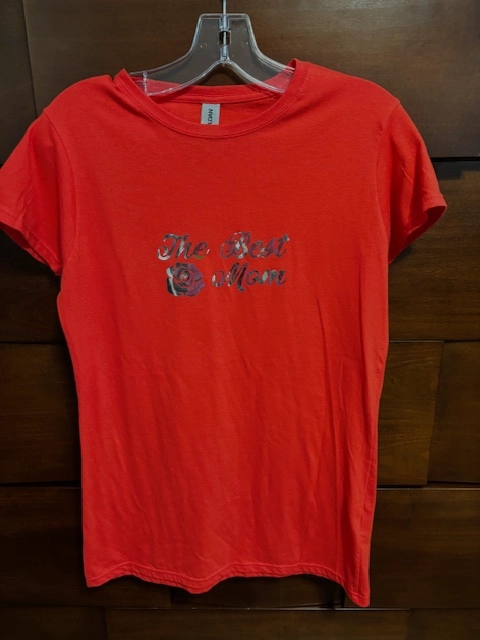The Art of Custom Embroidery: Opening the Secrets to Creating Distinct and Memorable Layouts
The keys to developing customized embroidery layouts that mesmerize the eye and leave an enduring impact lie in a delicate equilibrium of method, creative thinking, and attention to information. As we delve right into the world of custom needlework, we discover the nuanced interaction between thread option, sew complexity, and style customization that raises a mere garment to a job of art.
Selecting the Right Needlework Threads
When selecting embroidery strings, what essential elements should you take into consideration to guarantee the ideal results for your customized designs? The selection of embroidery thread is critical in determining the final result of your stitched layout. Among the primary factors to consider is the material of the string. Different materials such as cotton, polyester, rayon, and silk use varying degrees of luster, longevity, and texture. It is necessary to choose a string material that matches the fabric you are embroidering on and lines up with the desired appearance of the design.
Furthermore, the weight or thickness of the thread plays a considerable duty in the look of the needlework. Thicker strings can include measurement and texture to your style, while finer strings are suitable for detailed information and tiny text. In addition, taking into consideration the shade fastness and washability of the thread is critical to ensure that your customized designs maintain their quality and vibrancy with time. By meticulously reviewing these variables and picking top notch threads that meet your specific needs, you can boost the aesthetic appeal and longevity of your stitched developments.
Discovering Different Stitch Strategies
To look into the world of 'Discovering Different Stitch Techniques', one have to comprehend the intricacies and nuances that each stitching technique brings to the art of needlework. Different stitch techniques not just include visual passion however additionally contribute to the general structure and measurement of the design. One preferred stitch technique is the satin stitch, which entails carefully jam-packed parallel stitches to develop a smooth and shiny surface area, ideal for completing forms and developing strong describes.
On the other hand, the backstitch is a versatile method frequently used for detailing and adding great information. It involves stitching in reverse to produce a strong line of embroidery. Additionally, the French knot stitch adds a responsive element to designs, best for developing distinctive accents like flower centers or attractive touches.
Discovering various stitch methods allows embroiderers to play with light, darkness, and deepness within their layouts, boosting the aesthetic appeal and creative high quality of their needlework jobs. By mastering different sewing methods, one can unlock unlimited opportunities for producing distinct and remarkable custom embroidery pieces.
Incorporating Personalized Design Elements
Having actually checked out the complexities of various stitch methods such as the satin stitch, backstitch, and French knot, the emphasis now moves towards including individualized layout components in customized needlework projects. Personalized layout aspects play a crucial function in making embroidery projects absolutely special and unforgettable.
An additional method to integrate personalized layout aspects is by consisting of symbols or themes that hold special definition to the recipient or show their interests and individuality. Incorporating a favored flower, pet, or hobby-related icon can make the embroidery style more significant and tailored. Furthermore, picking colors that resonate with the recipient or align with the designated motif can even more improve the customization of the embroidery job.
Understanding the Art of Color Sychronisation
One key element of color coordination is understanding color concept. This includes recognizing exactly how different colors communicate with each other, the feelings they convey, and just how they can be incorporated to produce visually enticing layouts. By applying color concept concepts, embroiderers can produce unified color palettes that improve the total look of the style.
In addition, taking notice of contrast is crucial in color control. Utilizing contrasting colors can assist particular components of the design pop, boost legibility, and produce an aesthetically vibrant embroidery item. By understanding the art of shade coordination, their explanation embroiderers can click over here now raise their styles and develop memorable pieces that reverberate with customers and viewers alike.
Enhancing Structure With Advanced Needlework Stitches

French knots, for example, are perfect for including tiny, increased dots to your layout, resembling the appearance of beads or developing a textured surface. Bullion knots, on the other hand, can be utilized to develop twisted, ropelike elements that add a lavish feel to the embroidery. Seed sewing involves tiny, scattered stitches that can complete areas with a polychromatic structure, while turkey work produces cosy, dimensional accents similar to pet hair or vegetation. Try out these sophisticated embroidery stitches enables you to push the limits of conventional embroidery and produce genuinely one-of-a-kind and aesthetically enticing appearances home in your layouts.
Verdict
To conclude, the art of personalized needlework entails a mix of picking the ideal threads, exploring numerous stitch strategies, integrating personalized design components, understanding color coordination, and boosting structure with advanced stitches. By recognizing and applying these crucial aspects, embroiderers can create special and unforgettable designs that display their creativity and ability. Embroidery fanatics can open the tricks to creating attractive and bespoke items that attract attention and leave an enduring impression.